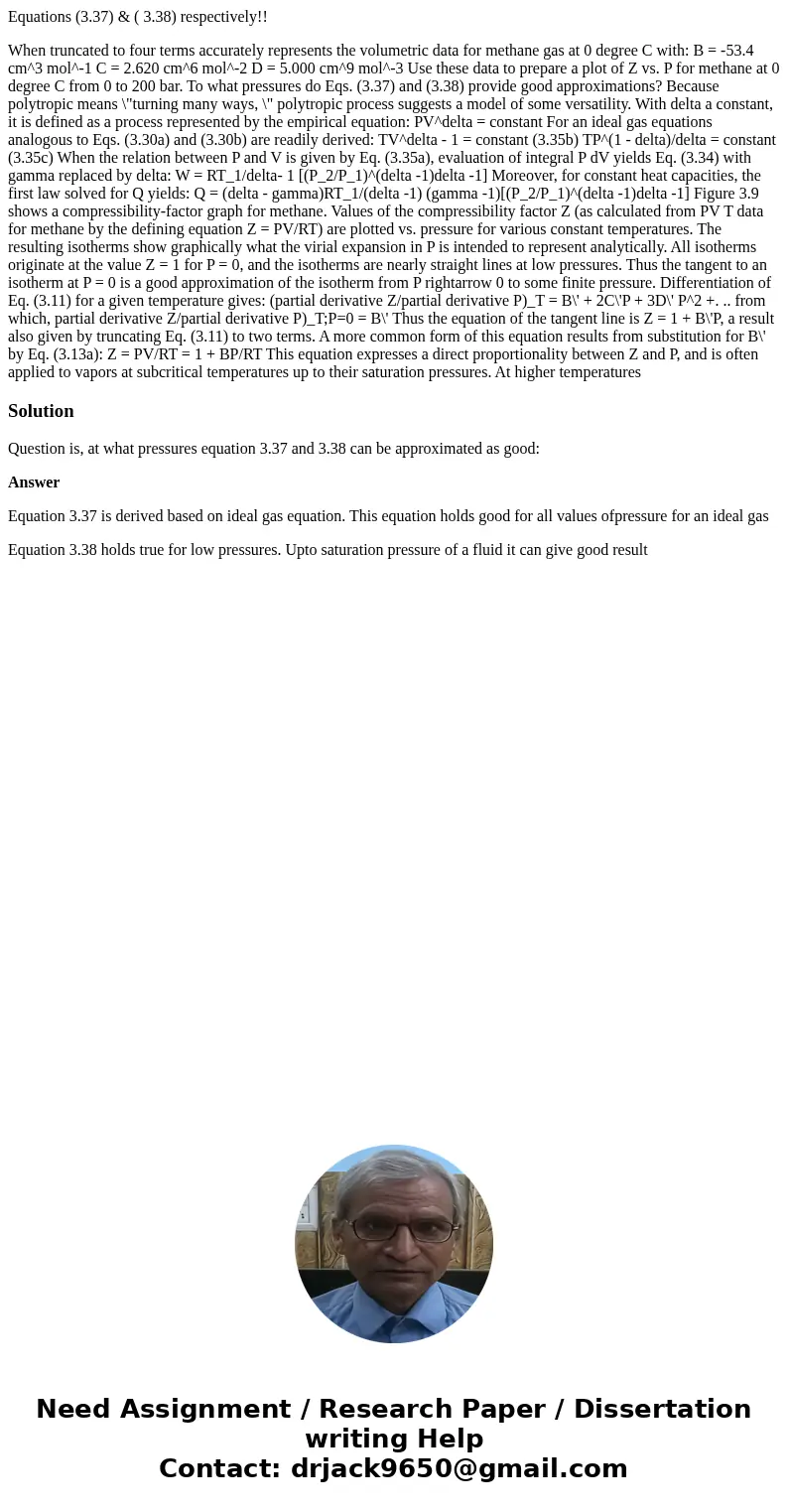Equations 337 338 respectively When truncated to four term
Equations (3.37) & ( 3.38) respectively!!
When truncated to four terms accurately represents the volumetric data for methane gas at 0 degree C with: B = -53.4 cm^3 mol^-1 C = 2.620 cm^6 mol^-2 D = 5.000 cm^9 mol^-3 Use these data to prepare a plot of Z vs. P for methane at 0 degree C from 0 to 200 bar. To what pressures do Eqs. (3.37) and (3.38) provide good approximations? Because polytropic means \"turning many ways, \" polytropic process suggests a model of some versatility. With delta a constant, it is defined as a process represented by the empirical equation: PV^delta = constant For an ideal gas equations analogous to Eqs. (3.30a) and (3.30b) are readily derived: TV^delta - 1 = constant (3.35b) TP^(1 - delta)/delta = constant (3.35c) When the relation between P and V is given by Eq. (3.35a), evaluation of integral P dV yields Eq. (3.34) with gamma replaced by delta: W = RT_1/delta- 1 [(P_2/P_1)^(delta -1)delta -1] Moreover, for constant heat capacities, the first law solved for Q yields: Q = (delta - gamma)RT_1/(delta -1) (gamma -1)[(P_2/P_1)^(delta -1)delta -1] Figure 3.9 shows a compressibility-factor graph for methane. Values of the compressibility factor Z (as calculated from PV T data for methane by the defining equation Z = PV/RT) are plotted vs. pressure for various constant temperatures. The resulting isotherms show graphically what the virial expansion in P is intended to represent analytically. All isotherms originate at the value Z = 1 for P = 0, and the isotherms are nearly straight lines at low pressures. Thus the tangent to an isotherm at P = 0 is a good approximation of the isotherm from P rightarrow 0 to some finite pressure. Differentiation of Eq. (3.11) for a given temperature gives: (partial derivative Z/partial derivative P)_T = B\' + 2C\'P + 3D\' P^2 +. .. from which, partial derivative Z/partial derivative P)_T;P=0 = B\' Thus the equation of the tangent line is Z = 1 + B\'P, a result also given by truncating Eq. (3.11) to two terms. A more common form of this equation results from substitution for B\' by Eq. (3.13a): Z = PV/RT = 1 + BP/RT This equation expresses a direct proportionality between Z and P, and is often applied to vapors at subcritical temperatures up to their saturation pressures. At higher temperaturesSolution
Question is, at what pressures equation 3.37 and 3.38 can be approximated as good:
Answer
Equation 3.37 is derived based on ideal gas equation. This equation holds good for all values ofpressure for an ideal gas
Equation 3.38 holds true for low pressures. Upto saturation pressure of a fluid it can give good result

 Homework Sourse
Homework Sourse